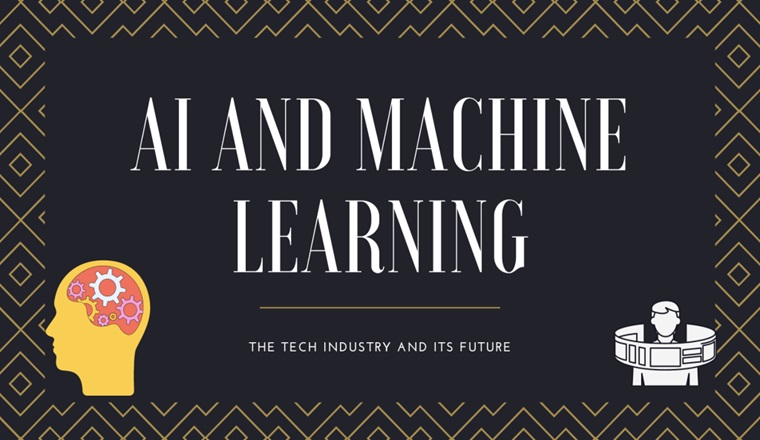The Role of AI and Machine Learning in Streamlining Audio Dubbing Workflows
Introduction
With the help of Artificial Intelligence (AI) and Machine Learning (ML), the world of audio dubbing has changed for the better. Dubbing is a specialized technique used by voice artists to replace the original dialogue of a video with a translated dialogue to cater to a different audience. Dubbing involves various steps such as linguistic accuracy, attention to detail, and synchronization with the lip movements of the on-screen actors. This tiresome process has been made easy with the help of AI and ML. These technological tools have made the dubbing process faster, more efficient, cost-effective, and more capable of maintaining the cultural nuances.
Role of AI and ML in Improving the Dubbing Process
As technology advances, Artificial Intelligence and Machine Learning make significant progress, too. With AI and ML growing stronger daily, audio dubbing has become smoother. Let us understand what role AI and ML have to play in the dubbing process.
Automated Script Translation
One of the initial steps in audio dubbing involves translating the script from the original to the target language. Historically, this has been a lengthy and expensive task, especially when dealing with complicated languages. AI-driven translation tools have greatly reduced this burden. These AI systems are experts at processing large volumes of text quickly and accurately. They can identify context, idiomatic expressions, and cultural references. All of this ensures a precise translation of the dialogue. Moreover, AI translation tools support multiple languages, which makes the dubbing process smoother and more reliable.
Voice Synthesis
Of the many remarkable advancements made in audio dubbing, the biggest one is AI-based voice synthesis and cloning technology. These innovative systems can copy human speech patterns, tonalities, and accents with high accuracy. As a result, voiceovers in various languages can be generated easily and in less time and money when compared to the traditional methods. The important thing to note here is that these AI-generated dubbings can maintain the emotional depth of the original dialogues, which preserves the integrity of the content.
Lip Sync Automation
Accurately lip-syncing the dubbed dialogue with the movements of on-screen characters has always been a tough task. Earlier, precise lip-syncing involved manual adjustments and a lot of human effort. By automating this process, AI and ML have made it possible to adjust the translated dialogue’s timing and duration. Through carefully analyzing the original footage, these algorithms can automatically adjust the timing and duration of translated dialogue. This removes the need for labor-intensive manual synchronization, resulting in a more efficient and streamlined workflow.
Voice Actor Selection
AI has also found a role in selecting voice actors for dubbing projects. These systems perform data analysis to examine the attributes of the voice actor, such as pitch, tone, and delivery style. By matching these attributes to the characteristics of the on-screen characters, AI can help select the best voice actor according to the requirements. This ensures a more structured and authentic audio dubbing experience.
Quality Control and Error Detection
Machine learning algorithms can be trained to identify errors and inconsistencies in the dubbing process. These errors may include mispronunciations, pacing issues, or variations in tone and pitch. AI greatly helps control the dubbing quality by automatically detecting these errors. This way, there is less need for manual post-production corrections.
Customization and Personalization
AI and ML excel at customization and personalization of content. By analyzing audience preferences and cultural differences, AI can tailor dubbing to match the expectations of specific viewer groups or regions. This level of personalization improves the viewer experience and builds a deeper connection between the audience and the content.
Advantages of AI and ML in Audio Dubbing
Mentioned above were how Artificial Intelligence and Machine Learning play their role in making the dubbing process more efficient. Now, we will look at a few advantages AI and ML have regarding audio dubbing.
Cost Reduction
One of the most compelling advantages of integrating AI and ML into audio dubbing workflows is the overall cost reduction. Automating various aspects of the dubbing process leads to significant savings in both time and resources. As a result, production companies can produce high-quality dubbed content more efficiently and at less costs.
Localization and Global Reach
AI-driven dubbing workflows play a crucial role in localizing content for global audiences. Offering content in multiple languages extends a production’s market reach and revenue potential. It also enhances accessibility, making content available to diverse audiences worldwide. This level of localization and accessibility would be highly time-consuming and costly without AI and ML technologies.
Enhancing Accessibility
AI and ML-powered dubbing are significant in making content accessible to individuals with disabilities. Subtitles, audio descriptions, and sign language interpretation can be easily integrated into the dubbing workflow. This ensures that a wider audience can enjoy and understand the content.
Efficient Post-production Editing
AI and ML algorithms are being used in post-production editing to streamline the dubbing process further. These algorithms can automatically detect and correct minor audio quality, pacing, and intonation inconsistencies. This reduces the need for a lot of manual editing.
Market Expansion
The integration of AI and ML in audio dubbing workflows has helped in the expansion of content markets. Streaming platforms, in particular, have benefitted from AI-driven dubbing, as they can quickly adapt their content for international audiences, expanding their user base and revenue potential.
Real-time Collaboration and Feedback
AI-driven collaboration tools have changed the way dubbing teams work together. These platforms enable seamless collaboration among team members, regardless of their location. Through real-time feedback, dubbing teams can work together more effectively and efficiently. This collaborative environment removes communication barriers and enhances the overall dubbing process.
Conclusion
In conclusion, AI and Machine Learning are catalysts of transformation in the audio dubbing domain. These technologies are revolutionizing how content is translated, voiced, and synchronized. This has resulted in more efficient, cost-effective, and globally accessible dubbing workflows. As the entertainment industry increasingly makes use of AI-driven solutions, we can expect audio dubbing to become a more integrated part of the content creation process. This will ensure that audiences worldwide can enjoy their favorite content in their preferred language. The future of audio dubbing is here, and it’s powered by AI and Machine Learning.



